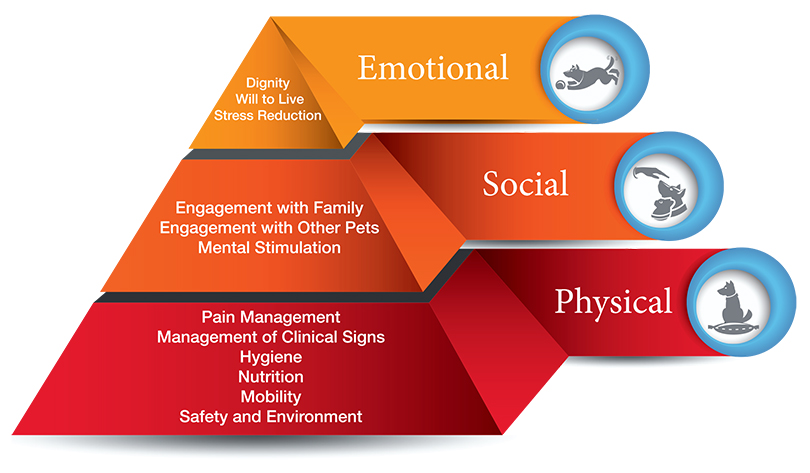How Can We Improve End-of-Life Care?
For those of us working the animal care field, do we know how most people want their pets to die? This was the topic of conversation when speaking with Dr. Kathleen Cooney, DVM, MS, CHPV earlier this month.
Dr. Cooney is an expert in end-of-life care and founder of Home to Heaven, P.C. in Loveland, Colorado, one of the world’s first, and largest, animal hospice services. In addition, she is founder of Cooney Animal Hospice Consulting and past President of the International Association for Animal Hospice and Palliative Care (IAAHPC).
At the end of the year, the American Animal Hospital Association and IAAHPC published the End-of-Life Care Guidelines on the collaborative efforts needed to provide animals a comfortable death. These guidelines were created by Dr. Cooney and colleagues to educate practitioners, veterinary technicians, and animal caretakers on end-of-life (EOL) care. This grassroots movement in veterinary medicine is especially important because how a veterinary clinic responds to a pet’s death can be a key factor in retention of that client, according to Dr. Cooney.

EOL care strives to maximize patient comfort and minimize suffering. Animal hospice can help with this process by addressing the physical, social, and emotional needs of animals and their caregivers alike. As Dr. Cooney describes, through education in this field we can ensure “the walk towards death is enriching, peaceful, and comfortable.”
Another main focus of the guidelines is developing a treatment plan for hospice care, which includes these four steps. For more detail, see the link to the guidelines above.
- Clarifying the client understands the pet’s disease.
- Communicating with the client on their needs, beliefs, and goals for treatment.
- Developing the unique EOL treatment plan.
- Initiating palliative or hospice care.
In addition to these four steps, pet loss support provided before, during, and after death is essential.
AAHA accredits small animal hospitals in the U.S. that hold themselves to specific standards. In creating these guidelines with AAHA, it is the hope that more veterinary clinics will implement hospice and palliative care practices. As Dr. Cooney describes, some clinics are already providing “more care, emotional and physical, from terminal diagnosis to death” but reaching a broader audience with these guidelines is important.
This comprehensive approach to death is different than what is currently taught in veterinary school as this new model focuses on the human animal bond, rather than just palliation. The AAHA/IAAHPC guidelines build on the American Veterinary Medical Association’s policy on hospice care.
The guidelines also mention that “as the value of animal hospice care and its availability increase, so will the feasibility of ethically managed, high quality, hospice-supported natural death, and the decision to euthanize will become more nuanced.” I asked Dr. Cooney about how we can address this and she described that when we realize an animal has a life limiting illness, euthanasia is no longer our only modality to help patients and clients—but rather we should use all the modalities at our disposal. This may include symptomatic relief (such as pain control), communication with clients about changes the pet may be experiencing, and how we can medically and emotionally address these changes. She shared that 95% of her clients want their pets to die naturally but at some point are okay with euthanasia. We, as animal caretakers and veterinarians, need resources like these guidelines, to formulate questions and help clients through the grief process.
Dr. Cooney also shared educational opportunities related to EOL care. On April 3rd, 2017, a 6-hour certificate course will open for those in the veterinary and pet care field that want to expand their knowledge on pet hospice. This course will be offered through Vetfolio, an online course company that is partnering with AAHA and The North American Veterinary Community (NAVC) to create this course.
For veterinarians and technicians seeking more specialized training, IAAHPC has a 115-hour certification program on hospice and palliative care. This program includes four modules, three online and one that is competed at the national conference, with special sessions for those completing the certification.
Thanks to Dr. Cooney for the insight into the growing field of hospice and palliative care for our beloved pets.
 Donate
Donate
0 Comments
Recommended Comments
There are no comments to display.